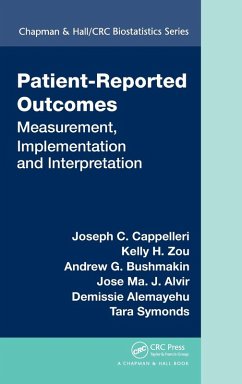
A Researcher's Guide to Using Electronic Health Records
From Planning to Presentation
Versandkostenfrei!
Versandfertig in 1-2 Wochen
169,99 €
inkl. MwSt.
Weitere Ausgaben:

PAYBACK Punkte
85 °P sammeln!
In an age when electronic health records (EHRs) are an increasingly important source of data, this essential textbook provides both practical and theoretical guidance to researchers conducting epidemiological or clinical analysis through EHRs. Split into three parts, the book covers the research journey from start to finish. Part 1 focuses on the challenges inherent when working with EHRs, from access to data management, and raising issues such as completeness and accuracy which impact the validity of any research project. Part 2 examines the core research process itself, with chapters on rese...
In an age when electronic health records (EHRs) are an increasingly important source of data, this essential textbook provides both practical and theoretical guidance to researchers conducting epidemiological or clinical analysis through EHRs. Split into three parts, the book covers the research journey from start to finish. Part 1 focuses on the challenges inherent when working with EHRs, from access to data management, and raising issues such as completeness and accuracy which impact the validity of any research project. Part 2 examines the core research process itself, with chapters on research design, sampling, and analysis, as well as emerging methodological techniques. Part 3 demonstrates how EHR research can be made meaningful, from presentation to publication, and includes how findings can be applied to real-world issues of public health. Supported by case studies throughout, and applicable across a range of research software programs (including R, SPSS, and SAS), this is the ideal text for students and researchers engaging with EHRs across epidemiological and clinical research.














